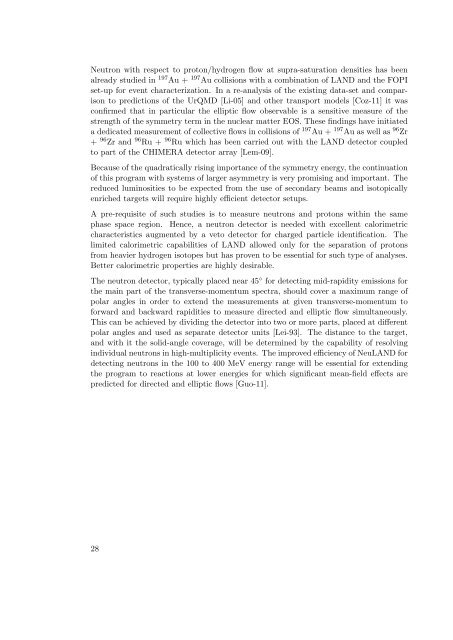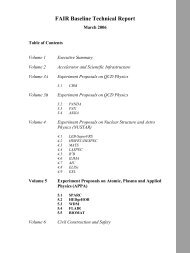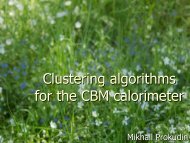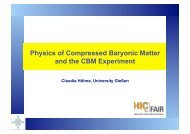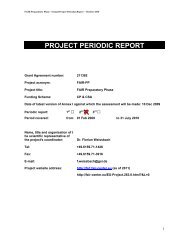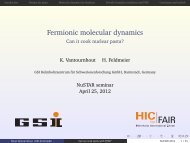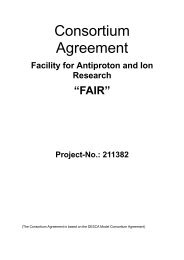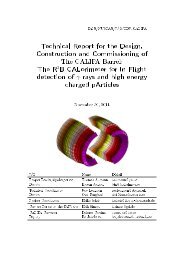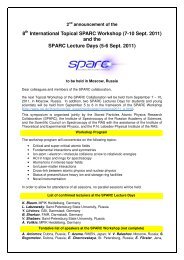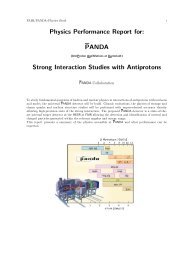NeuLAND - FAIR
NeuLAND - FAIR
NeuLAND - FAIR
You also want an ePaper? Increase the reach of your titles
YUMPU automatically turns print PDFs into web optimized ePapers that Google loves.
Neutron with respect to proton/hydrogen flow at supra-saturation densities has been<br />
already studied in 197 Au + 197 Au collisions with a combination of LAND and the FOPI<br />
set-up for event characterization. In a re-analysis of the existing data-set and comparison<br />
to predictions of the UrQMD [Li-05] and other transport models [Coz-11] it was<br />
confirmed that in particular the elliptic flow observable is a sensitive measure of the<br />
strength of the symmetry term in the nuclear matter EOS. These findings have initiated<br />
a dedicated measurement of collective flows in collisions of 197 Au + 197 Au as well as 96 Zr<br />
+ 96 Zr and 96 Ru + 96 Ru which has been carried out with the LAND detector coupled<br />
to part of the CHIMERA detector array [Lem-09].<br />
Because of the quadratically rising importance of the symmetry energy, the continuation<br />
of this program with systems of larger asymmetry is very promising and important. The<br />
reduced luminosities to be expected from the use of secondary beams and isotopically<br />
enriched targets will require highly efficient detector setups.<br />
A pre-requisite of such studies is to measure neutrons and protons within the same<br />
phase space region. Hence, a neutron detector is needed with excellent calorimetric<br />
characteristics augmented by a veto detector for charged particle identification. The<br />
limited calorimetric capabilities of LAND allowed only for the separation of protons<br />
from heavier hydrogen isotopes but has proven to be essential for such type of analyses.<br />
Better calorimetric properties are highly desirable.<br />
The neutron detector, typically placed near 45 ◦ for detecting mid-rapidity emissions for<br />
the main part of the transverse-momentum spectra, should cover a maximum range of<br />
polar angles in order to extend the measurements at given transverse-momentum to<br />
forward and backward rapidities to measure directed and elliptic flow simultaneously.<br />
This can be achieved by dividing the detector into two or more parts, placed at different<br />
polar angles and used as separate detector units [Lei-93]. The distance to the target,<br />
and with it the solid-angle coverage, will be determined by the capability of resolving<br />
individual neutrons in high-multiplicity events. The improved efficiency of <strong>NeuLAND</strong> for<br />
detecting neutrons in the 100 to 400 MeV energy range will be essential for extending<br />
the program to reactions at lower energies for which significant mean-field effects are<br />
predicted for directed and elliptic flows [Guo-11].<br />
28


